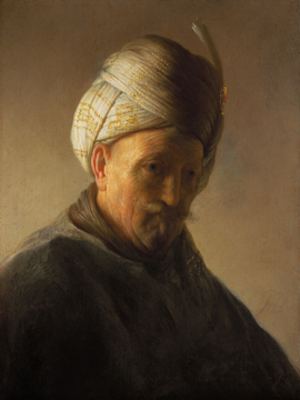 | ||
The Rembrandt Research Project (RRP) is an initiative of the Nederlandse Organisatie voor Wetenschappelijk Onderzoek (NWO), which is the Netherlands Organization for Scientific Research. Its purpose is to organize and categorize research on Rembrandt, with the aim of discovering new facts about this Dutch Golden Age painter and his studio. The project was started in 1968, but has since become the authority on Rembrandt and has final say in whether a painting is genuine.
Contents
Results
As a result of the project, which analyzed documentation, techniques, and forensic research on Rembrandt paintings from his early years in Leiden until his death, the number of signed Rembrandt self-portraits around the world has been reduced by half. Also, more paintings have been attributed to students working in the Rembrandt studio, and more has been discovered about the ways in which the students worked. Recently, period copies of Rembrandt paintings are being studied for clues as to whether certain copies were factory-style pieces for visiting functionaries. Rembrandt's work was in high demand for decades, and he managed to keep productivity up while also keeping his prices high by enforcing strict quality control on the work done in his studio.
The project's six-volume publication, A Corpus of Rembrandt Paintings, is considered the definitive authority by all auction houses and dealers who work with works by Rembrandt and his studio. The research project has proved invaluable to art historians, and the lack of such a project for other prominent Dutch painters such as Frans Hals is felt sorely by museums and collectors trying to acquire the same sort of stamp of approval on their paintings. However, the project has also initiated debate about the feasibility of conclusive attribution, particularly for painters who were associated with one or more workshops.
Publications
Concordance with other Rembrandt catalogs
The research project is also the single point of reference regarding concordance with other catalogs of the master's works, though most of these reference each other, as well. Below is a partial list of some commonly quoted catalogs:
Old man with turban
In 1998, the pAn Amsterdam art fair showed a Rembrandt for the first time that until then had been attributed to his pupil Jacques des Rousseaux. This painting was first cataloged in 1917 by Abraham Bredius, who accepted it as a Rembrandt. Later Kurt Bauch rejected this based on a photograph and attributed it to Jan Lievens without ever having seen the painting. Werner Sumowski re-attributed the painting based on photographs to Rousseaux as a rebuttal to the arguments by art historians Bauch, Jakob Rosenberg and Horst Gerson. The Rembrandt Research project seeks to avoid such arguments by making attributions based on historical and forensic evidence. The study of Rembrandt's oevre includes study of drawings and etchings as well as paintings by a wide range of artists who were Rembrandt's contemporaries. Analysis of his techniques includes the study of paints and panel wood he and his contemporaries used, while x-rays of paintings reveal whether a painting is a copy based on the amount of "discovery" drawing in the underlayer.
The pAn 1998 catalog contains an article by Ernst van de Wetering with foto's of other depictions of the same man by Jan Lievens, Gerard Dou, and Jacques Rousseau (thus the mis-attribution). The man has clearly the same face in all four portraits.
Rembrandt's father
According to Van de Wetering, this is the man often referred to as Rembrandt's father, who was probably not his father, but a functionary in the Leiden painters' guild or male model.
End
In early 2011, the RRP board voted to terminate the project by the end of 2011 even though approximately one-quarter of Rembrandt's oeuvre has not yet been investigated. A major reason for this decision was the lack of scholars available to assume responsibilities from the RRP's chair, Ernst van de Wetering, who has been involved with the project since 1968. Other reasons cited included lack of funding, as the Netherlands Organisation for Scientific Research ceased funding the project in 1998. However, with funding from the Mellon Foundation, the Netherlands Institute for Art History and the Mauritshuis have launched a pilot initiative called the Rembrandt Database that will build off of and supplement research from the RRP.
